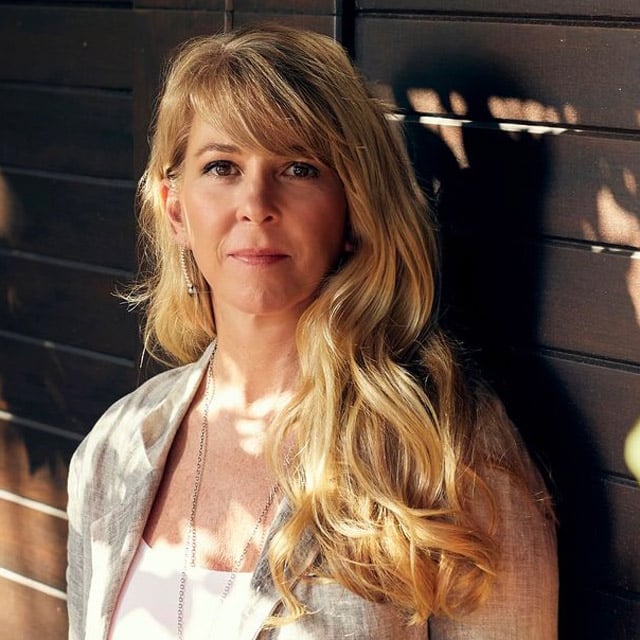Liz Ann Sonders: Stocks Look Weaker Under the Surface

When it comes to inflation, the non-discretionary or “needs” Consumer Price Index components are experiencing a 6% inflation rate, while the discretionary or “wants” components are flat and slightly into deflation territory, she said.
“So that is an actual problem, but it’s a psychological problem too because it’s, ‘Geez, you know, the stuff I have to spend money on, my auto insurance, health care costs, that’s the stuff that’s gone up a lot and is not coming down quickly.’”
Cash vs. Debt
These economic trends have different meanings for different companies, Sonders noted, citing interest rate sensitivity as an example.
Many large tech companies are huge cash-generating businesses, which is one reason why mega-cap stocks have done well, Sonders noted. As a result, they don’t have much debt and many actually earn more interest on their cash than they pay on their debt.
“You go down the cap spectrum, you go into the so-called zombie companies, the companies that don’t have enough cash flow to pay the interest on their debt or the non-profitable companies,” and profitable Russell 2000 stocks are outperforming non-profitable stocks by roughly 18 percentage points year to date, she said. “I believe that might be an all-time record.”
Keeping Investors on Track
How do these economic and market trends affect the guidance that financial advisors might offer?
“It depends obviously on who the investor is. Are they a stock picking investor? Are they a fund investor? If they’re a fund investor, are they taking a passive approach in index funds or ETFs or are they taking an active approach, even if it’s via funds?
“So there’s no one cookie-cutter answer, but in general, what we have said is there are ways via discipline to keep or at least prevent your portfolio from developing the concentration risk that has developed in the indexes.”
That means taking steps like periodic rebalancing and diversification.
“Nobody wants to talk about that stuff. No one’s going to have you on financial television and want you to talk about periodic rebalancing and diversification across and within asset classes,” said Sonders. “It’s the disciplines that keep investors on track.”
While many investors will base their rebalancing on the calendar, they can do portfolio-based rebalancing, “meaning let your portfolio tell you when it’s time” to trim back outsize gains or to add to certain holdings, she said.
Schwab also has focused on factor- or characteristic-based investing rather than market sectors or segments, with an emphasis on high-quality companies, Sonders noted.
She suggested screening for companies that won’t be hampered by higher-for-longer interest rates, and for those with strong free cash flow, high return on equity, as well as high-quality, profitable, reasonably valued businesses. This can keep investors in leading names “without having to make a monolithic sector call or two,” because even in the tech sector, “not everything’s been a winner there,” Sonders added.
High quality has been the dominant and consistent theme in this environment, she noted. That may seem obvious, “but there are times where going down the quality spectrum” into non-profitable companies with weaker balance sheets can benefit in a big economic upswing.
Stock valuations are “pretty rich” now and maintaining an upward trajectory in earnings estimates is key to supporting those valuations, according to Sonders. Disinflation is important too, even if inflation metrics don’t reach the Fed’s target, she added.
The ‘Great Moderation’ Is Over
Sonders believes the economy and markets are making a transition from the “great moderation” era that stretched from roughly the mid-1990s to 2022, to a more volatile “temperamental” era, similar to the mid-1960s to mid-1990s, with greater inflation swings, more recessions and more geopolitical uncertainty, as well as sharper growth phases.
This new era also may mean that stock and bond prices will move in the same direction, Sonders noted. While that could mean losing the portfolio diversification benefit, there are many strategies and opportunities for such an environment.
These could include more active management on the fixed income side and a realization that investors need to lock in yields and hold the duration as opposed to trying to trade. “So it’s not better or worse, it’s just different,” said Sonders, noting that individual investors now also have greater access to alternative assets to help them diversify beyond stocks and bonds.
For advisors guiding clients, the recommendations depend on the individual investor, she noted.
“At Schwab we have $9.2 trillion of client assets. Even if I had a little birdie from the future land on my shoulder and say, ‘I’m going to give you a 99% conviction call on what the market’s going to do, the stock market, the bond market.’ But I was sitting across from two different investors,” one in their 20s, employed and a multimillionaire, the other in their 70s, retired, with a nest egg they can’t afford to lose, “what I would tell those two investors is entirely different.”
“So,” Sonders continued, “I always say shame on anyone who actually gives a cookie-cutter answer to that.”






